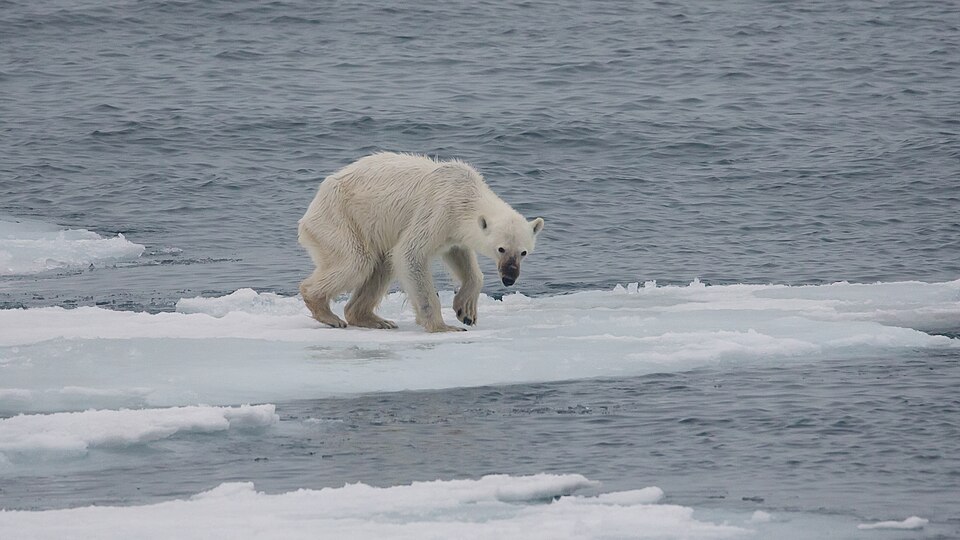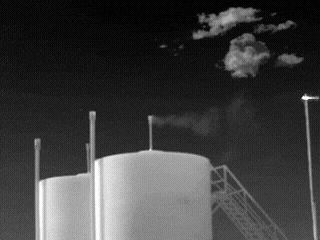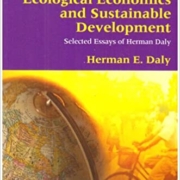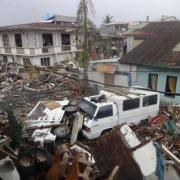Carbon Footprint Tramples Planetary Boundaries
by Amelia Jaycen
The carbon footprint of an individual, organization, or country is the amount of carbon dioxide (CO2) that must be produced to accommodate their choices: the types of transportation, heating and cooling, and diet they adopt and the manufacture and disposal of products they use. As a component of the total impact on the environment, called ecological footprint, a carbon footprint can be expressed as the amount of land or biocapacity required to absorb CO2 emissions.

A third of all glaciers in World Heritage Sites will disappear by 2050 due to climate change and rising temperatures. (European Union, Copernicus Sentinel-2, Imagery)
According to the Global Footprint Network, we would have needed 13 billion biologically productive “global hectares” to absorb all the CO2 emissions associated with fossil fuels in 2022. That’s more than Earth’s total biocapacity the same year, only a fraction of which was dedicated to sequestering carbon.
Biocapacity is the ability of ecosystems to rebuild. When we overload Earth systems, they cannot replenish useful resources or perform ecosystem services we rely on for life to continue on Earth. When our carbon footprint oversteps planetary boundaries—the physical limitations of Earth’s functional systems—we experience the impacts of a dying planet. Bringing our footprint back into balance with Earth’s biocapacity is the only way to restore full functionality, avoid disaster, and ensure healthy life on Earth.
But how soon we can balance Earth’s carbon budget is unknown. There is no shortage of information on effective steps to get to net-zero carbon emissions, indicating it is entirely possible. What is missing is widespread adoption of change in social and economic systems.
Balancing the Carbon Budget
Since the mid-19th century, human activity has caused a warming planet by releasing large amounts of greenhouse gases, mainly through burning fossil fuels. Greenhouse gases and other harmful emissions are also produced during raw materials processing, industrial manufacturing, shipping, and disposal. Other emission sources include leaks at oil and gas operations and off-gassing, in which volatile organic compounds like benzene are released into the air from manufactured products.
We are already experiencing the effects of greenhouse gas emissions, with melting glaciers, increasing numbers of wildfires, and more extreme storms and flooding. Today, the planet is 1.8°C (2.7°F) hotter than it was in the 1880s, and there is more CO2 in the atmosphere than at any time in the last 800,000 years, according to ice core samples.

Polar bears starve and die as warming causes Arctic ice to melt earlier each year, leaving them stranded and upsetting the hunting patterns they used for 100,000 years. (Andreas Weith, CC BY-SA 4.0)
The ten warmest years since humans began keeping records in 1850 have occurred in the last decade, and 2024 was the warmest year on record on both land and sea. Warming is widely accepted to be already locked-in at 1.5°C above preindustrial levels. Even if we could achieve net-zero carbon emissions immediately, the impacts of carbon already released will be felt long after reaching that milestone.
While reducing the carbon footprint—and ensuring our survival—requires changes at every level, from individuals to countries, one of the fastest ways to reduce carbon dependence and its perils is the steady-state solution. That means stabilizing population and GDP to stay within functional planetary limits.
Spiraling Out of Control
Some greenhouse gases are naturally occurring, and they function within Earth’s natural systems to provide the ecosystem service of regulating Earth’s temperature. The natural “greenhouse effect” of Earth’s atmosphere keeps conditions on our planet balanced to support life, so Earth is not extremely hot or cold and lifeless like the rest of the universe.
The problem occurs when the amount of heat-trapping gases rises beyond the natural levels in Earth’s carbon cycle. This causes an amplification of the natural greenhouse effect, heating the planet beyond its normal state and throwing the planetary system out of balance.
CO2 is the most abundant greenhouse gas, and methane is one of the most potent. Greenhouse gases also include nitrous oxide and industrial fluorinated gases. “Carbon emissions” refers specifically to CO2, and 80 percent of greenhouse gas emissions in the United States are in the form of CO2. Burning fossil fuels is the number one cause of CO2 emissions.
While transportation, electricity for heating, and industrial manufacturing for products like steel and plastic consume large amounts of energy, the global cement industry has come to the forefront as a major emitter of CO2. It not only uses large amounts of electricity but also directly releases CO2 during processes such as making lime and hardening agents. The cement industry is expected to continue to grow by as much as 20 percent by 2050, as built-up land continues to expand.
Among the greenhouse gases, methane is particularly problematic. It intensifies climate change rapidly due to its extremely high potency in trapping heat in the atmosphere, 86 times stronger than CO2. Methane is responsible for almost one third of total planetary warming so far, and its concentration in the atmosphere has more than doubled over time. Yet, fluctuations in the last two decades are a mystery scientists are still working to figure out. Methane emissions come from a variety of both natural and manmade sources, including natural gas, livestock, fertilizers, wetlands, wildfires, permafrost thaw, geologic seeps, and ocean floor “methane hydrates”.
Hidden methane emissions are increasingly found to be related to flaring from fracking wells or invisible leaks from oil and gas operations, which can add up to nearly 80 million metric tons wasted per year, dangerously heating the planet.

Optical gas imaging captured by Earthworks reveals invisible air pollution venting from a separator on a storage tank at an oil and gas well site in New Mexico. (Image provided by Earthworks)
A growing number of organizations believe leaks in oil and gas operations are the low-hanging fruit in the battle to reduce the human carbon footprint. Earthworks is a company aiming to make these invisible leaks visible using highly specialized thermal imaging cameras.
But the oil and gas system is complicated to monitor. Earthworks Senior Manager Dakota Raynes notes it includes “millions of wells and miles of pipelines, nearly 10,000 operators, code-enabled infrastructure, frequent acquisitions and trades, and volatile market dynamics.”
Sorting companies’ public-relations messaging from the realities of methane leaks can be challenging but fruitful, Raynes explained at a recent webinar on methane leaks. Last year, Earthworks examined a “radical transparency program” launched by the Pennsylvania governor and the Pittsburgh-based natural gas company CNX, which markets itself as a producer of “ultra-low carbon-intensive natural gas.”
“We conducted a field investigation of sites that were not part of the program to assess whether they might be cherry picking data,” Raynes said. Using advanced equipment, his organization detected emissions at sites that were not part of the program and filed complaints. Their investigation of the transparency program is ongoing, and they plan to continue to work with regulators to improve the use of satellite imagery in methane emissions enforcement.
The Anthropocene: A Nervous Dance around Earth’s Boundaries
The current epoch has been called the Anthropocene, named for the Greek word for human beings. Humans are causing extensive changes to Earth’s natural systems, pushing them to extremes beyond which we cannot predict how Earth will respond.
“Planetary Boundaries” are part of a framework developed in 2009 to identify the nine essential categories of Earth systems required for the planet to function normally and provide all the ecosystem services we rely on. The 2025 update to the framework revealed humans have already exceeded six of the nine boundaries, two within the last ten years.

The Planetary Boundaries framework shows the 9 key systems required for Earth to function normally. Humans have now surpassed 6 of the 9 boundaries. (Marcus Lundstedt/Stockholm Resilience Centre, CC BY-NC-ND 3.0)
“Crossing boundaries increases the risk of generating large-scale abrupt or irreversible environmental changes,” the Stockholm Resilience Centre, home to one of the Planetary Boundaries framework’s key authors, notes.
Similarly, NASA’s “Earth Indicators” show increasing CO2, methane, and global temperature and ocean warming, sea level rise, and shrinking ice sheets and sea ice. Earth is like one giant living organism, so it is impossible to know precisely how carbon-induced system changes will affect different aspects of the planet.
Impacts like heat, weather events, and degradation of the biosphere will vary in intensity, vary with geography, and be largely unpredictable, since norms across large spans of time—known as “stationarity” in data—can no longer be relied upon. In Earth science, baseline data are a thing of the past because systems are continuously changing without recovery to historical norms. We’ve reached “The End of Stationarity,” as noted in the aptly titled book on the chaos occurring in global markets in the “age of carbon shock.”
The Intergovernmental Panel on Climate Change (IPCC) was formed to track climate data, perform scientific assessments, set emissions limits, and create a framework for international accountability. It has released six major assessment reports so far. After the first IPCC report was published, the United Nations Framework Convention on Climate Change (UNFCCC) was formed to bring countries together for multilateral agreements to battle climate change. The Paris Agreement in 2015 set a goal for signatories to keep temperature rise below 2°C and strongly suggested limiting it to 1.5°C.
But breaking up with carbon has been harder than expected, peppered with successes and failures. Even with the current commitments, we are on track to reach 2.7°C warming, which will cause a variety of irreversible damage our species is ill-prepared to face. Ahead of the U.N. Climate Conference (COP30) in Belem, Brazil, to take place November 10–21, 95 percent of countries have failed to submit information about their national carbon contributions or to make future commitments. President Trump withdrew the United States from the Paris Agreement this year, and the U.S. is not sending any high-level officials to COP30 this month.
Meanwhile, global energy use is surging, complicating the transition away from fossil fuels. Houses are being swallowed by the sea in the Outer Banks of North Carolina. More than 40,000 abrupt-permafrost-thaw areas in the Arctic are destabilizing building foundations and releasing CO2 and methane. There are not only more hurricanes, but more that develop from a minor storm to a major storm rapidly, giving residents less time to evacuate and increasing the threat to human lives.
A Complicated Relationship
Finding specific root causes and the fastest way to reduce carbon emissions is a complicated equation. The dynamic relationship between carbon emissions and GDP growth seems to be without a clear pattern, driven by complex economic mechanisms. There are indicators that some countries have successfully “decoupled” economic growth and carbon emissions, but their methods can cause other countries to emit more.
For example, a country can lower its emissions by importing instead of producing products, but that still causes emissions in the producing country, known as “carbon leakage,” and is unlikely to reduce the overall global total. Countries can also export their manufacturing facilities to other countries to reduce their home country’s emissions, causing the same problem instead of addressing the fundamental causes of emissions.

A visualization based on NASA Earth Observatory data shows global emissions from fossil fuels, in yellow, increasing. (NASA Earth Observatory, Public Domain)
The I-PAT model developed by CASSE signatory Paul Erhlich and his colleagues frames human impacts on the environment as a function of three factors: population (P), affluence (A), and technology (T). An adaptation of I-PAT developed by Japanese energy economist Yoichi Kaya called the Kaya Identity attempts to drill down into the causes of greenhouse gas emissions. Along with population and GDP per capita, it includes two additional factors: the type of carbon burned (emissions per unit consumed) and the energy intensity of GDP, or the units of energy per unit of GDP. The Kaya Identity has been a useful foundation in developing future emissions scenarios and is used by governments, businesses, and in an IPCC Special Report on Emissions Scenarios.
Energy needs and emissions are different in rich versus under-developed countries. While it is important to reduce fossil fuel use and support renewable energy systems in developing countries, reducing runaway luxury consumption in wealthy nations can greatly reduce the global carbon footprint. People in rich countries consume more than people in poor countries and are therefore responsible for more global carbon emissions. The average carbon footprint for a U.S. resident is 16.2 metric tons every year, higher than any other country. Within the United States, the richest ten percent have carbon footprints of 56.5 tons per year.
Individuals can drastically reduce their carbon footprints by switching to LED lightbulbs, using energy-efficient appliances, insulating their homes, limiting travel, switching to renewable electricity sources, switching to a plant-based diet, limiting new purchases, buying used, recycling, and composting.
But behavioral changes by individuals may not be enough to reduce global carbon emissions to levels that halt climate change. For a successful energy transition from fossil fuels to renewable energy sources, we need market mechanisms that value sustainable energy and comprehensively guide us away from fossil fuel hegemony. Across the spectrum, every industry needs to accelerate its transition to net-zero-carbon practices and operations to reduce the global carbon footprint.
The Fastest Route to Decarbonize
In addition to transitioning from fossil fuels to renewables, there are also ways to reduce growth overall, which addresses the root cause of emissions by requiring less energy, less raw materials, and using less of Earth’s biocapacity overall. In nations, states, and counties that are well developed or over-developed, when additional growth causes more harm than good, they need degrowth toward a steady state economy.

A quote from Dr. Gro Harlem Brundtland speaking at the Imperial Grantham Institute.
The Natural Resources and Electricity Cap-and-Trade (NRECT), a feeder bill to CASSE’s Steady State Economy Act, outlines limits and procedures for timber, iron ore, and electricity cap-and-trade systems that protect the environment far better than the current system of unsustainable economic growth without limits. NRECT suggests the Federal Energy Regulatory Commission (FERC) establish pricing tiers for electricity usage. These tiers would differentiate energy use that is essential for households and companies from energy use beyond that which is “sustainable and equitable,” which should be priced higher.
Dr. Gro Harlem Brundtland, the first female prime minister of Norway, former director general of WHO, and a member of The Elders spoke on October 29 at the Imperial Grantham Institute in London to address the topic of “Reclaiming our Common Future.” She noted multi-level changes are needed, and a lot of it depends on economic systems.
“Climate action has to happen at the community level and at the country level,” she said. “We are dependent on having a type of economic development that doesn’t ruin nature and the environment and at the same time has a good distribution between different people. It’s a question of solidarity, involving all people, their human rights, their dignity, and their right to a future.”
 Amelia Jaycen is a program manager at CASSE.
Amelia Jaycen is a program manager at CASSE.






Thanks for this Amelia. This pretty much reflects what drove my thinking, in the 2004-2007 timeframe, to seek out whoever was carrying the torch for steady state economics and support them (and that’s how I found CASSE).
It’s all just math, really. All the stuff like “smart growth”, “green growth”, “sustainable growth” .. I’m sure most of the people chatting about that stuff are well meaning, good people. But in the nicest way possible, I’d want to tell them “this is magical thinking, and it will cause untold suffering if we continue to indulge in it.”
It’s also illuminating to dig deeper into what it would actually take to move a small chunk of humanity off of Earth and to something like Mars. Some good books have been written by people who were fired up by this idea, did some research and realized … oh hell no .. there’s not even a remote chance of that happening in this century, even allowing for several jaw dropping breakthroughs that have not happened yet. We are, basically, stuck on our (only) habitable planet, and will remain so for a long time, probably centuries.
Humanity will shift to a steady state economy, the only real question is: will it be a voluntary and sort of nice transition? Or will it be involuntary, and a matter of picking up the pieces of what’s left? The sooner we start, the less traumatic it will be.
Thanks, Amelia Jaycen, for this superb overview of the dangers ahead and at present, and your message about the central importance of limiting growth. As Cole Thompson points out in saying “it’s all just math, mitigation measures are somewhat helpful but as William McDonough said, they are just “less bad.” And another good point about change: voluntary and nice, or involuntary and after a lot of destruction.
Of the many helpful insights in the essay, I’ll point to two that might boost the voluntary supporters. One is about the limits of individual efforts even as they can become models or prods for others to join in—what I call the power of “statistical zeroes,” if they add up, https://www.youtube.com/shorts/P13W8qa-8DU. Still, individual efforts need structural support. Adding up those “zeroes” could prod for structural change. And also, good points about the Natural Resources and Electricity Cap-and-Trade (NRECT), which is a feeder bill to CASSE’s Steady State Economy Act, presenting limits and procedures for cap-and-trade systems. By speaking the language of pricing with tiers of costs, this step would make the large costs of growth tangible in immediate economic terms.